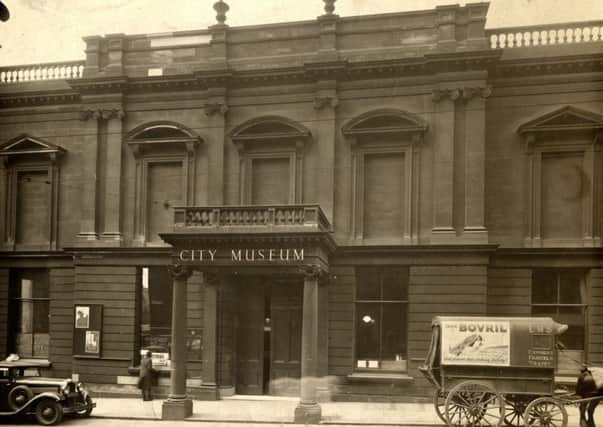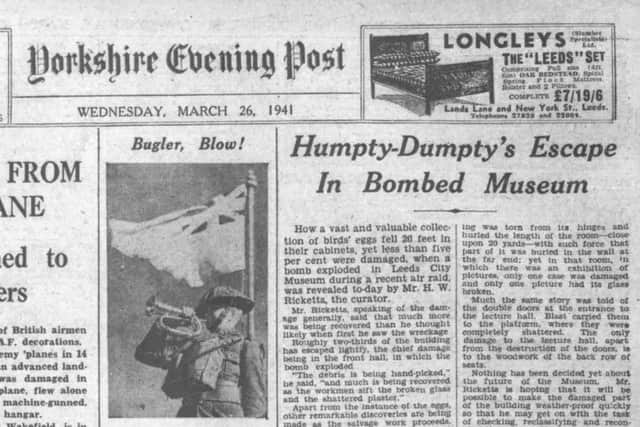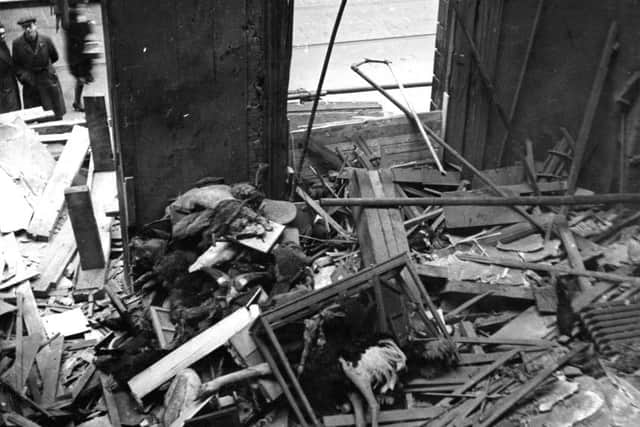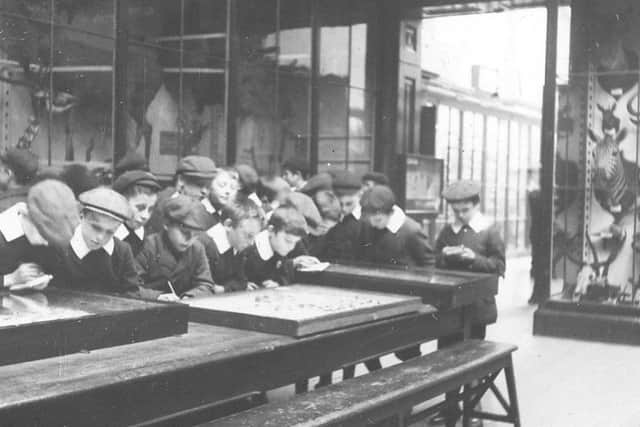Looking back to the night a bomb dropped on Leeds City Museum


Among the thousands of items on display inside was a magnificent elephant’s skeleton, a rare display of stamps on loan from the Leeds Philatelic Society and the famous Leeds tiger.
As they closed the doors, curators could never have imagined they’d be seeing many of them for the final time.
Advertisement
Hide AdAdvertisement
Hide AdBut at 3am the following morning, a bomb dropped during an air raid over the city smashed through the museum roof, causing massive damage to the front of the building and destroying many irreplaceable exhibits.


So bad was the blast that the main museum building, which had stood since 1819, had to be demolished.
Fortunately the museum recovered, eventually moving from Park Row to its current home on Millennium Square where today, the team are beginning preparations to mark their 200th anniversary in 2021.
As part of the commemorations, they want to hear from people in Leeds about their memories and stories of the explosion that rocked the original museum exactly 77 years ago next month.
Advertisement
Hide AdAdvertisement
Hide AdErrin Hussey, bicentenary archivist with Leeds Museums and Galleries, said: “This year marks the 77th anniversary of what was one of the darkest day in Leeds City Museum’s history.


“Fortunately no one was seriously hurt in the blast, but sadly many of the collections were less lucky.
“But as well as being a disaster at the time, the explosion also shaped the future of the museum’s collections and sparked its eventual move to the municipal buildings and then on to its current home at the Mechanics Institute building.
“We’d love to hear from anyone who can share stories or memories of the explosion so we can include this pivotal moment in our celebrations of the bicentenary of Leeds City Museum.”
Advertisement
Hide AdAdvertisement
Hide AdThe air raid was the worst of the nine suffered by Leeds during the Second World War, and unsurprisingly made headlines in the city.


On March 17, 1941, The Yorkshire Evening Post published an article reporting on the damage made to the museum by the bomb two days earlier. The reporter spoke to a curator who said: “I never thought we’d have to ‘dig’ inside our museum”.
A follow-up story on March 26 revealed how only five per cent of the museum’s ‘vast and valuable’ collection of birds’ eggs were damaged, despite falling 20 feet from their cabinet.
Coun Brian Selby, Leeds City Council’s lead member for museusms and galleries, said: “This was an truly extraordinary day in the long history of Leeds City Museum and one which had a lasting and irrevocable impact on the collection and on the museum service as a whole.
Advertisement
Hide AdAdvertisement
Hide Ad“It is testament to both the dedication of the curators at the time and the city’s enduring passion for heritage and history that the museum recovered and we still have such a remarkable here collection today.”
If you have a story, memory or photo of the air raid that hit Leeds City Museum, email it to [email protected].
You can also tweet @LeedsMuseums using #LCMBicentenary